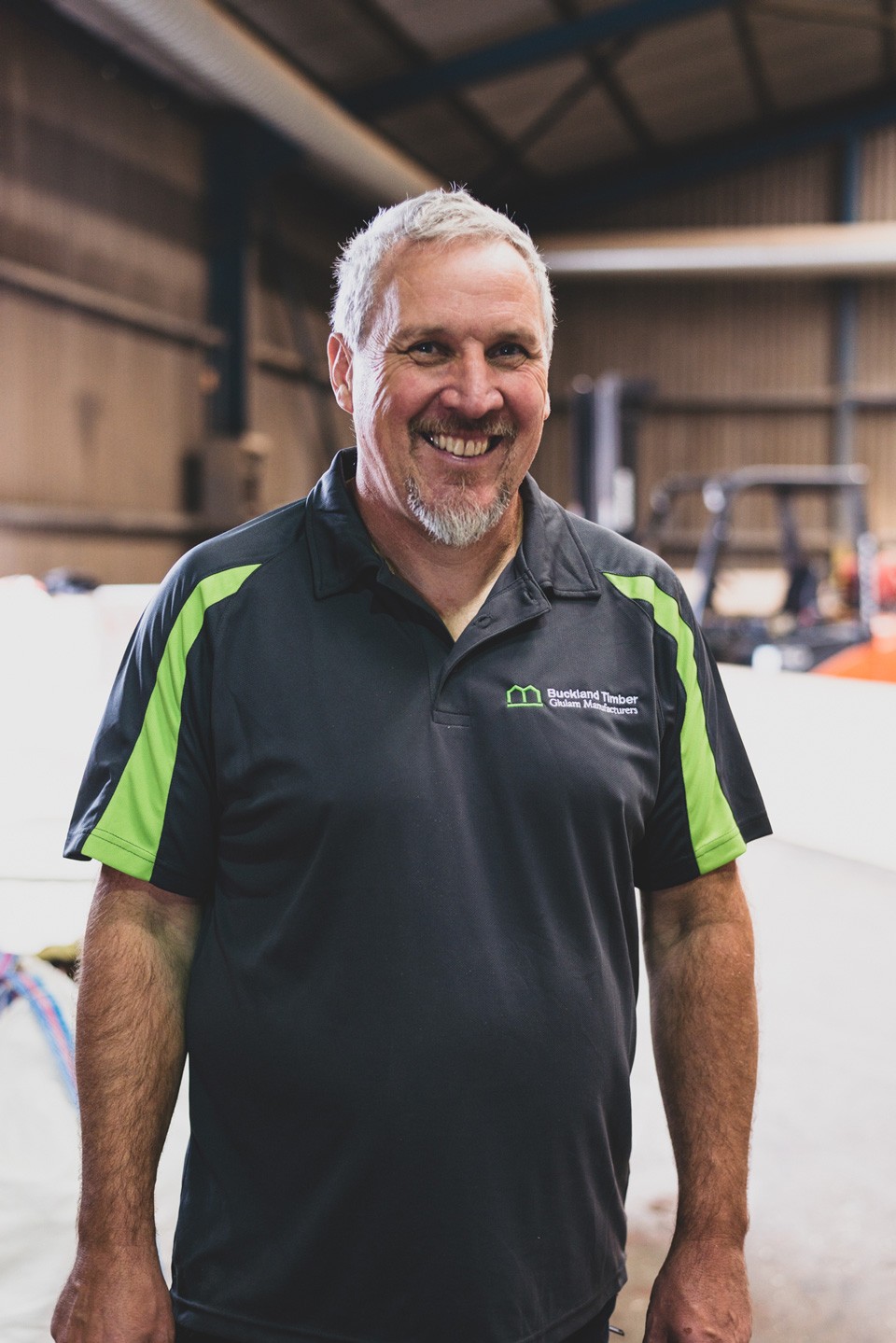Glulam Manufacture
We are the only CE marked glulam manufacturer in the UK. At our premises in Devon, we have the capacity to make pretty much any sized or shaped glulam beam. Curved, straight or complex with spans of 30-metres and more from Spruce, Oak, and Larch amongst other species.
We manufacture single, bespoke components, small batches right through to huge complex structures. As well as making glulam, we machine and assemble structural frames and apply a broad range of finishes prior to sending the finished frame out for installation.
Other items, such as CLT or standard mass-produced whitewood glulam beams, are imported and we have a strong working relationship with companies in both Austria and Germany who supply these items to us.
Our focus at Buckland Timber is to provide a flexible and fast manufacturing service, rather than a high volume commodity product. This allows us to make small runs of beams constructed from alternative timber species and to make bespoke curved or straight beams on short lead times.
More about how glulam is made…
A pack of sawn timber is prepared (cut to size) and loaded into a tipping machine that is designed to slowly release individual lengths of timber.
An operative visually grades each length of timber as it is released onto a driven roller table. This involves marking defects in the timber with a fluorescent crayon. The roller table is the start of the principal piece of machinery required for glulam production – the finger jointing line.
Once defects are marked, the pieces of timber are carried through a chop saw, which recognises the marks and automatically cuts out the marked defects. The remaining pieces of timber (lengths vary from 1m to 4.8m) are conveyed onto the finger joint cutter. This machine cuts a ‘zigzag’ pattern in both ends of all timber pieces.
The timber pieces then enter the finger joint press. This machine applies glue to the ends of each piece and clamps them together. From the finger jointer, onwards the timber is transformed into continuous lengths.
The jointed timber is then fed through a two-sided planer and onto an automated stacking table. Thereafter a chop saw cuts the continuous stream of finger-jointed timber into lengths according to whatever beam length is specified.
The whole process, from the marking of timber for defects to the stacking table, is automated and only requires one operative. The finger-jointed timber is then transferred to the glue line. Each stack will contain the timber required to make one beam and is transferred by forklift. The glue line rolls each piece of timber through a glue spreader at a set speed to maintain consistent coverage of glue.
On exit of the glue line, the timber is stacked into mechanical clamps by hand. The clamps are tightened using a torque wrench. The clamps can be arranged to produce curved or straight beams. The beams must be cured for about 8 hours at 25°C. A movable shroud is used to allow the clamping area to be heated to 25°C.
After curing, the beams are removed from the clamps, placed on a roller table then put through a four-sided planer. The beams are then required to be stored for a further 24hrs before being released for use.
If you’re considering using glulam for a project, we are happy to answer any of your questions, so please don’t hesitate to contact us.

Contact Brent Dicks:
Brent co-ordinates our manufacturing process at Buckland Timber. Please contact him with any questions:
Telephone: 01363 891 363
Email: brent@bucklandtimber.co.uk


